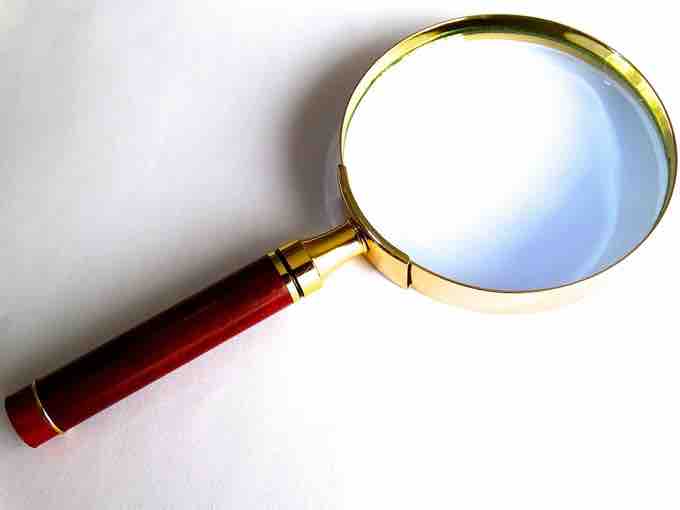A magnifying glass is a convex lens that lets the observer see a larger image of the object under observation. The lens is usually mounted in a frame with a handle, as shown below .

Magnifying Glass
A magnifying glass is a convex lens that lets the observer see a larger image of the object under observation.
The magnification of a magnifying glass depends upon where the instrument is placed between the user's eye and the object being viewed and upon the total distance between eye and object. The magnifying power is the ratio of the sizes of the images formed on the user's retina with and without the magnifying glass. When not using the lens, the user would typically bring the object as close to the eye as possible without it becoming blurry. (This point, known as the near point, varies with age. In a young child its distance can be as short as five centimeters, while in an elderly person its distance may be as long as one or two meters. ) Magnifiers are typically characterized using a "standard" value of 0.25m.
The highest magnifying power is obtained by putting the lens very close to the eye and moving both the eye and the lens together to obtain the best focus. When the lens is used this way, the magnifying power can be found with the following equation:
where
Typical magnifying glasses have a focal length of 25cm and an optical power of four diopters. This type of glass would be sold as a 2x magnifier, but a typical observer would see about one to two times magnification depending on the lens position.
The earliest evidence of a magnifying device was Aristophanes's "lens" from 424 BC, a glass globe filled with water. (Seneca wrote that it could be used to read letters "no matter how small or dim.") Roger Bacon described the properties of magnifying glasses in the 13th century, and eyeglasses were also developed in 13th-century Italy.